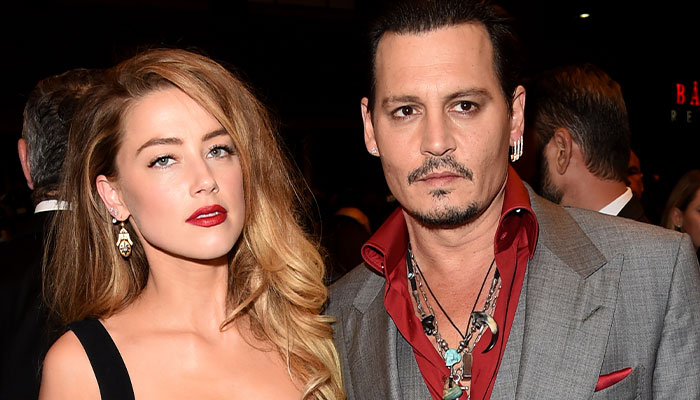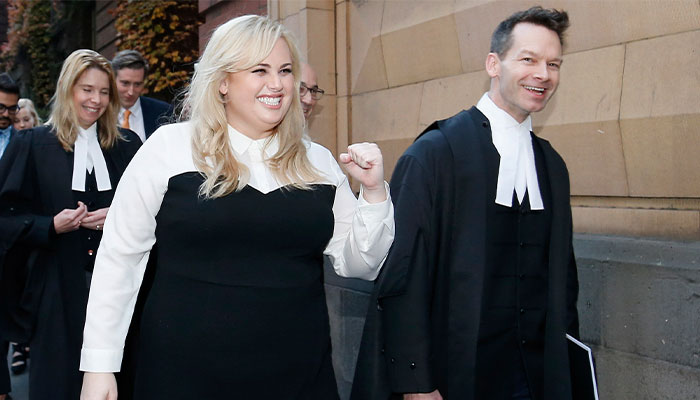Broadcast live on YouTube from a courtroom in Virginia and amplified on social media as well as in newspapers and on television and radio in Australia, Depp v Heard has been hard to ignore.

Happier times: Amber Heard and Johnny Depp, now locked in a vicious and excruciatingly public court battle.
The roots of the case date back to December 2018, when British tabloid The Sun published a story that described Pirates of the Caribbean actor Johnny Depp as a “wife-beater”.
Depp sued The Sun for defamation but a UK court dismissed the case.
The judge maintained 12 of the 14 alleged assaults by Depp against his ex-wife Amber Heard had occurred according to the ‘civil standard’. This means that under civil law, on the balance of probabilities, it was ‘more probable than not’ that the assaults occurred.
In the US, there’s no ceiling on reputational or economic loss and the sky’s the limit on what the court deems fair.
But the legal action didn’t stop there. After Heard wrote an opinion piece published in the Washington Post on the issue, Depp sued her personally for $US50 million for defamation and Heard counter-sued Depp for $US100 million in damages.
As to whether such a case could happen in Australia, while a celebrity can sue another celebrity for defamation, it would not come with the associated spectacle of being livestreamed, and payouts for non-economic loss here are limited.
How do you prove defamation and is truth a defence?
To prove defamation in both Australia and the US, courts have to decide whether statements made by person A to person B about person C would lower person C’s reputation in the eyes of person B.

Taking sides: Crowds outside the Depp v Heard trial in Virginia, which has been hard to ignore.
For example, if person A writes an article that says person C is a bank robber and person B reads that article, person B may think less of person C. If this is the case Person A may be found to have defamed person C. However, if person C is in fact a bank robber, person A may have a defence for defamation as truth is a defence.
Publishing something in the ‘public interest’ is also a defence. This means that if the person in question holds public office, the public has the right to know. This only applies to people’s personal lives if their actions impinge on their office.
How much can the applicant receive in damages in a defamation case?
In the US, there’s no ceiling on reputational or economic loss and the sky’s the limit on what the court deems fair for the applicant to receive as a payout.
In Australia, in 2020 the Council of Attorneys-General (one from each state and territory) approved amendments to their respective defamation acts to put a cap on non-economic loss reputational damages, which is $421,000. NSW passed this into law and the other states are poised to follow suit.
In 2020, NSW introduced a ‘serious harm threshold’ which means that the applicant must prove that the defamation caused, or would likely cause, serious harm to their reputation. This is so people don’t waste a court’s time with spurious or frivolous claims.
Currently, there’s no limit in Australian jurisdictions for payouts for economic loss – it just depends on how much income both past and future the court deems has or will be lost.
What is the largest defamation payout ever in Australia?
Prior to the amendments, Australian actor Geoffrey Rush received a $2.9 million payout in 2018 in his case against the Daily Telegraph (Nationwide News). The newspaper published stories accusing him of behaving inappropriately towards former co-star Eryn Jean Norvill.

Damages: Rebel Wilson pumps her fist after winning her defamation lawsuit against Bauer in 2017.
On appeal by the newspaper, the court dismissed the case, maintaining that a reasonable reader would consider Rush a pervert after reading comments made in the story.
A year earlier in another case, the Court of Appeal reduced damages awarded to comedian Rebel Wilson to $600,000, down from $4.7 million. The Court of Appeal held there was no basis to award damages for economic loss, with no evidence Wilson would miss out on future contracts because of eight articles published by Bauer Media in Woman’s Day, Women’s Weekly, OK Magazine and New Weekly, that Wilson said painted her as a serial liar.
Why are court cases broadcast in the US but not in Australia?
Court cases cannot be live-streamed in Australia. The Courts Legislation Amendment (Broadcasting Judgments) Act 2014 prohibits broadcasting cases, except for the judge’s final remarks in certain circumstances – such as in the judgement of alleged child abuse by Cardinal George Pell.
Defamation trials are the only civil cases to have juries in NSW. The argument is that if court proceedings were televised this may influence how a jurist would make their decision. Members of the public would know the case details and might try to influence the jurors. Court cases are not televised in Australia even when there is no jury for reasons of privacy, so defendants are not further subjected to stress and humiliation, nor further trial by media.
In the US it’s very different. The First Amendment to the US Constitution protects the freedom of speech and of the press. This stops the US Congress making any laws prohibiting the exercise of free speech and so court cases are recorded and broadcast.

Julian Dight (pictured) is an academic in the .








